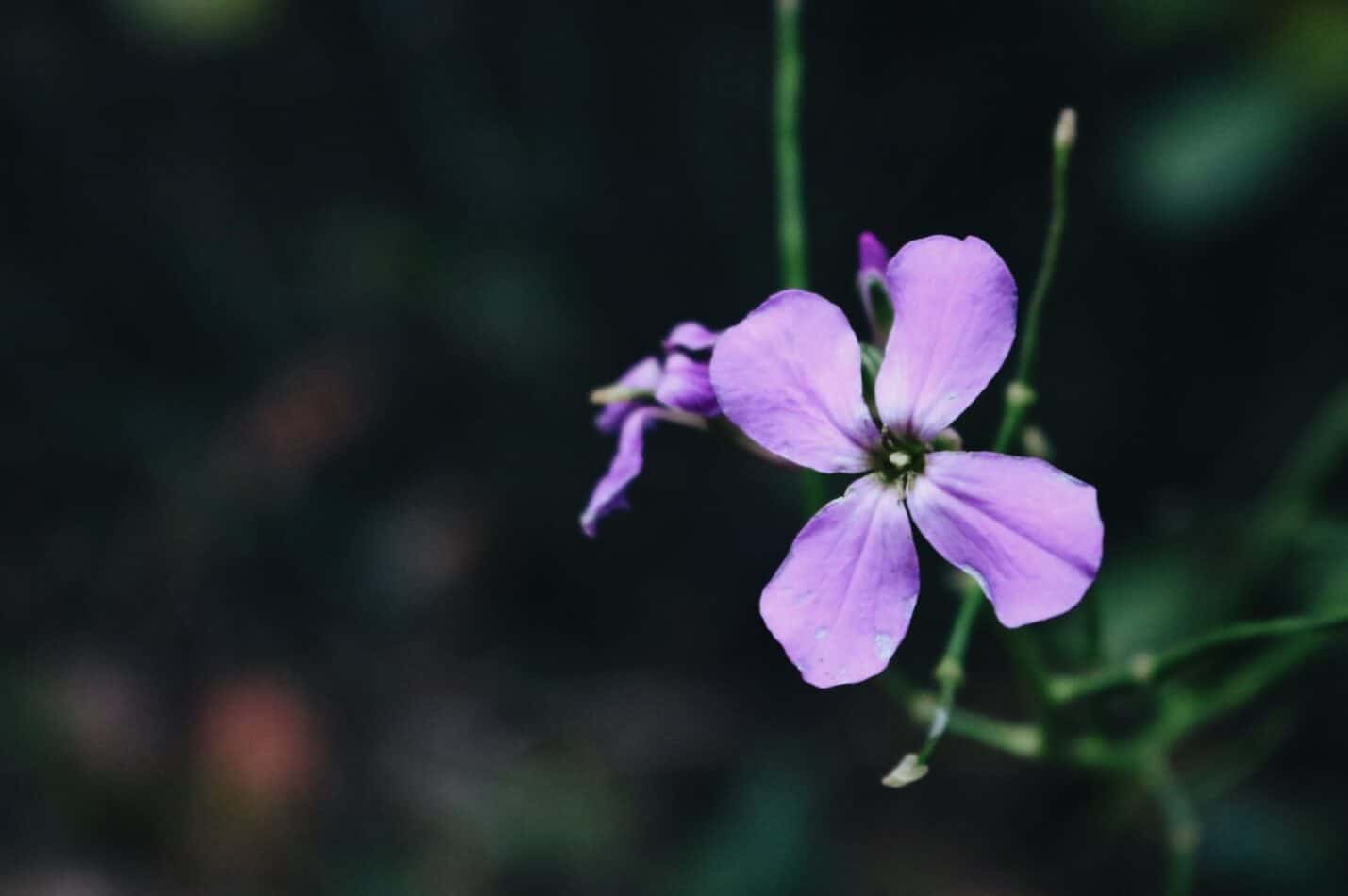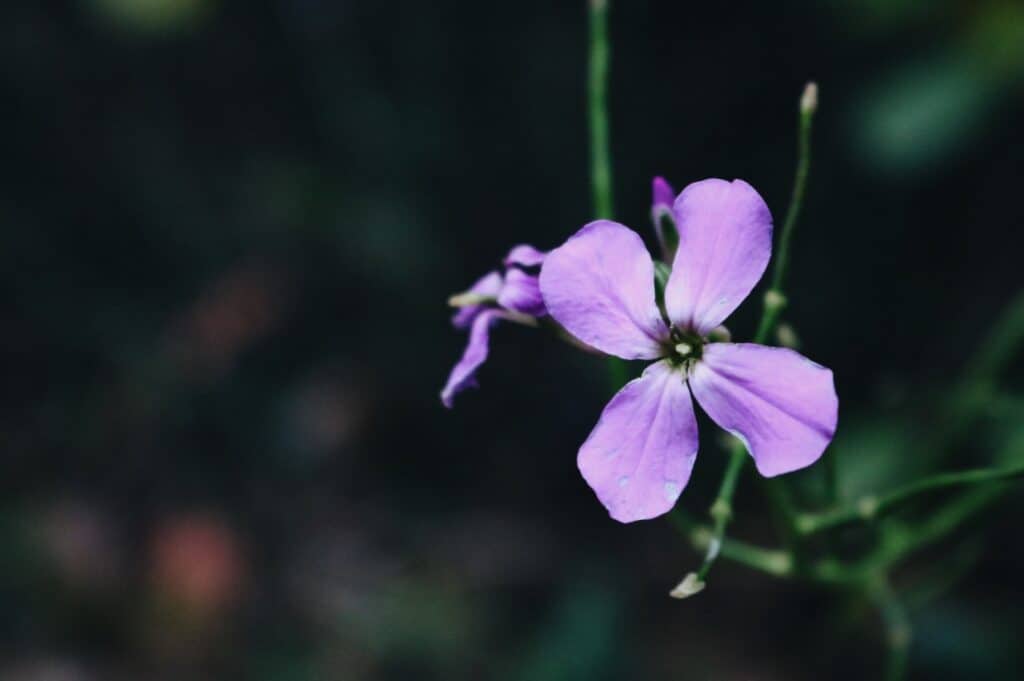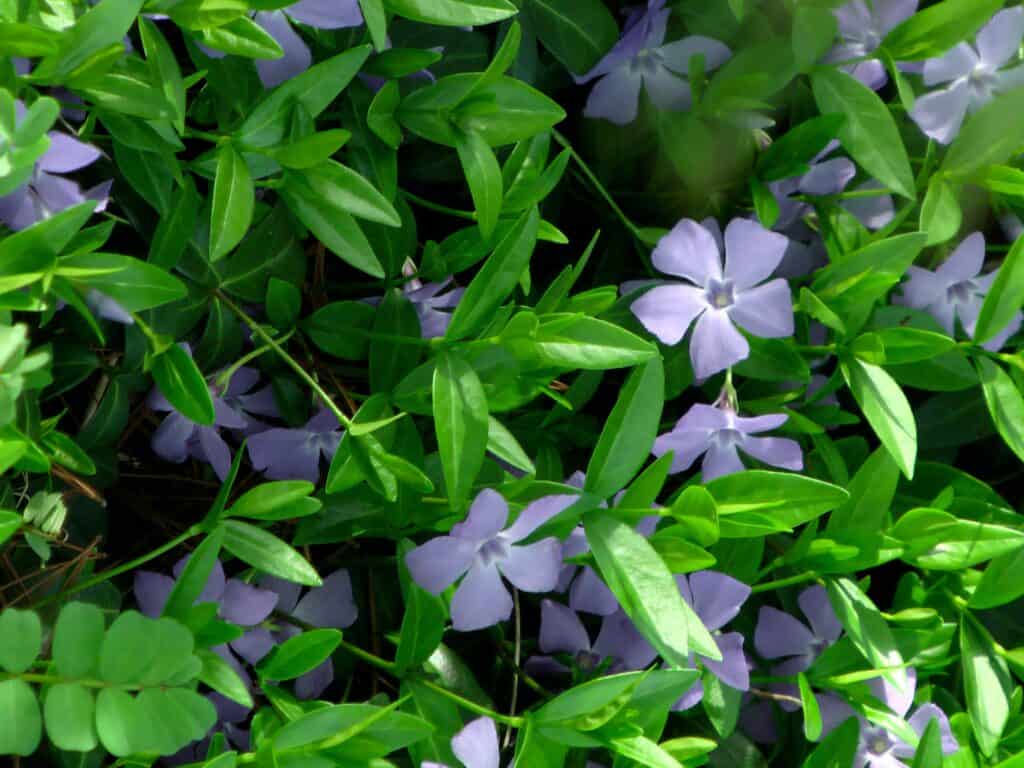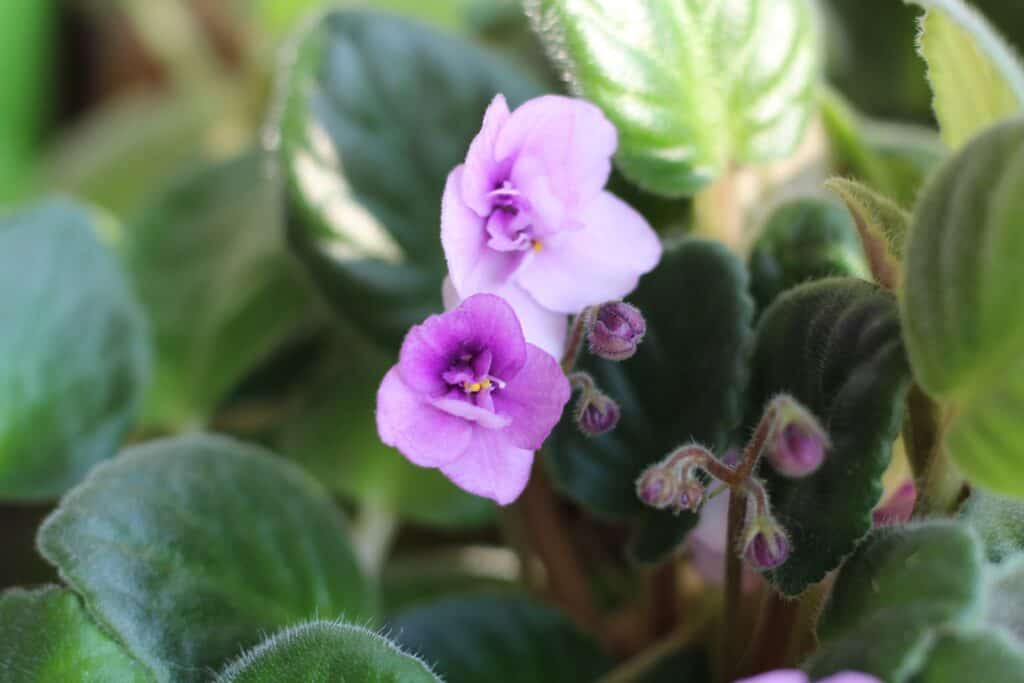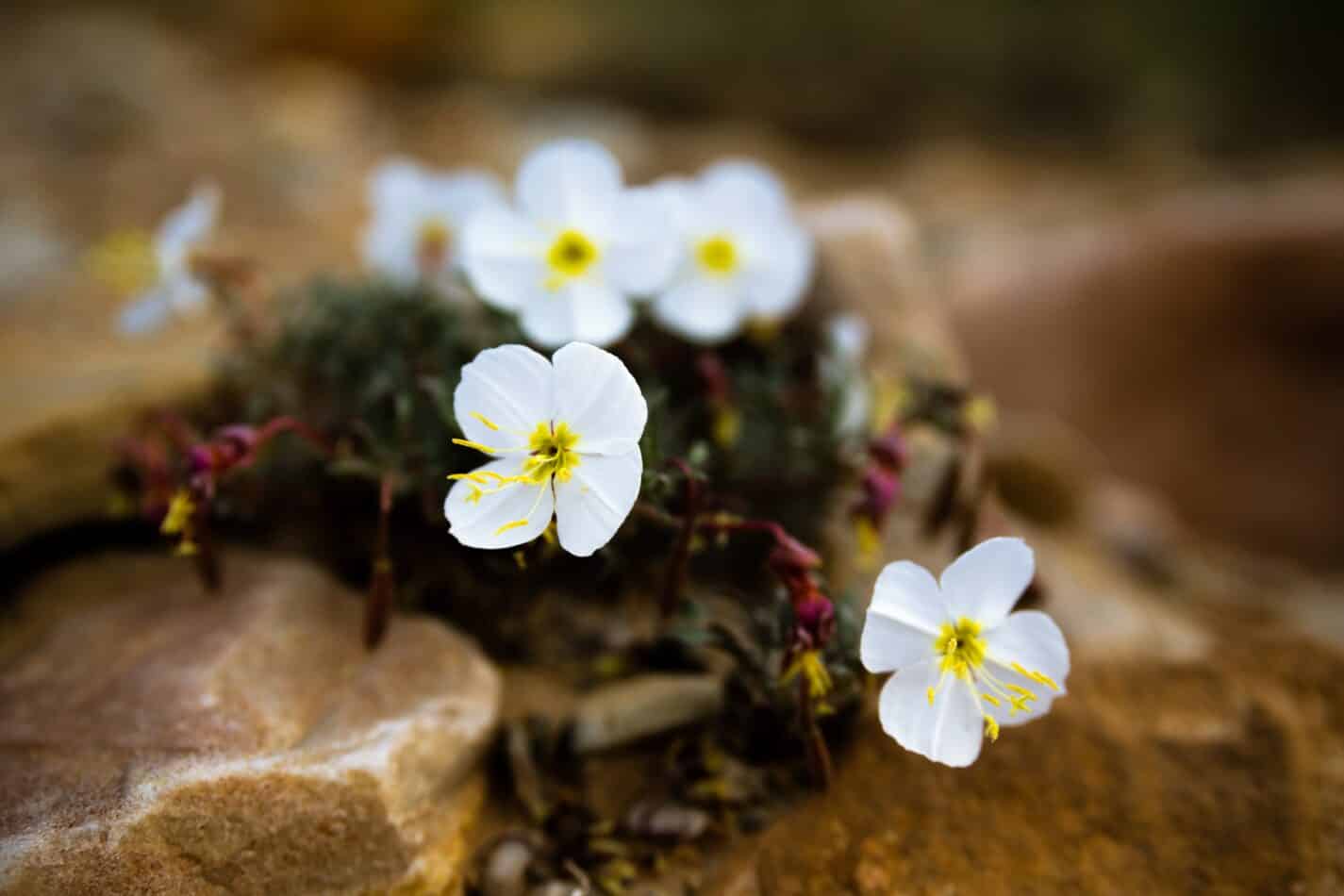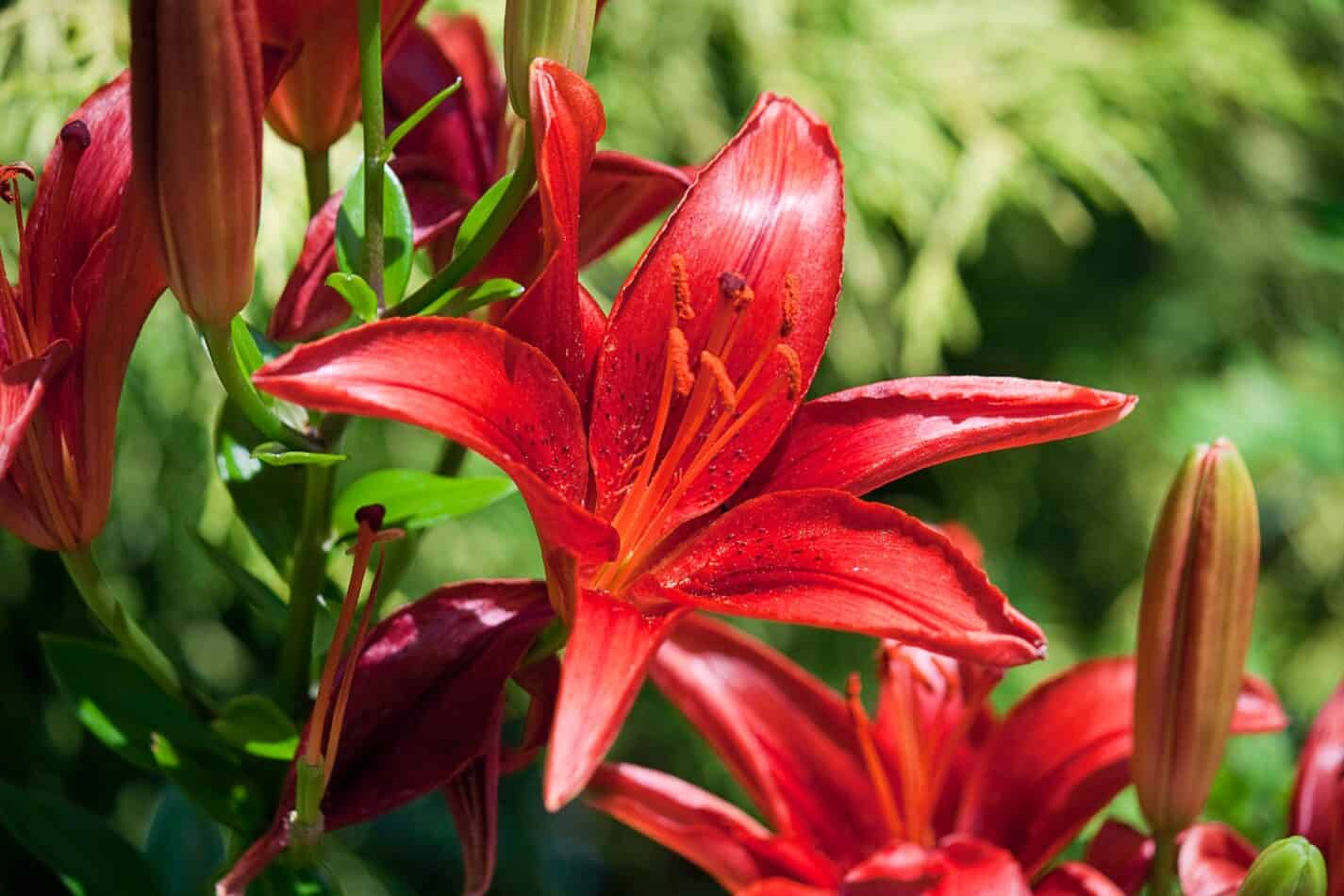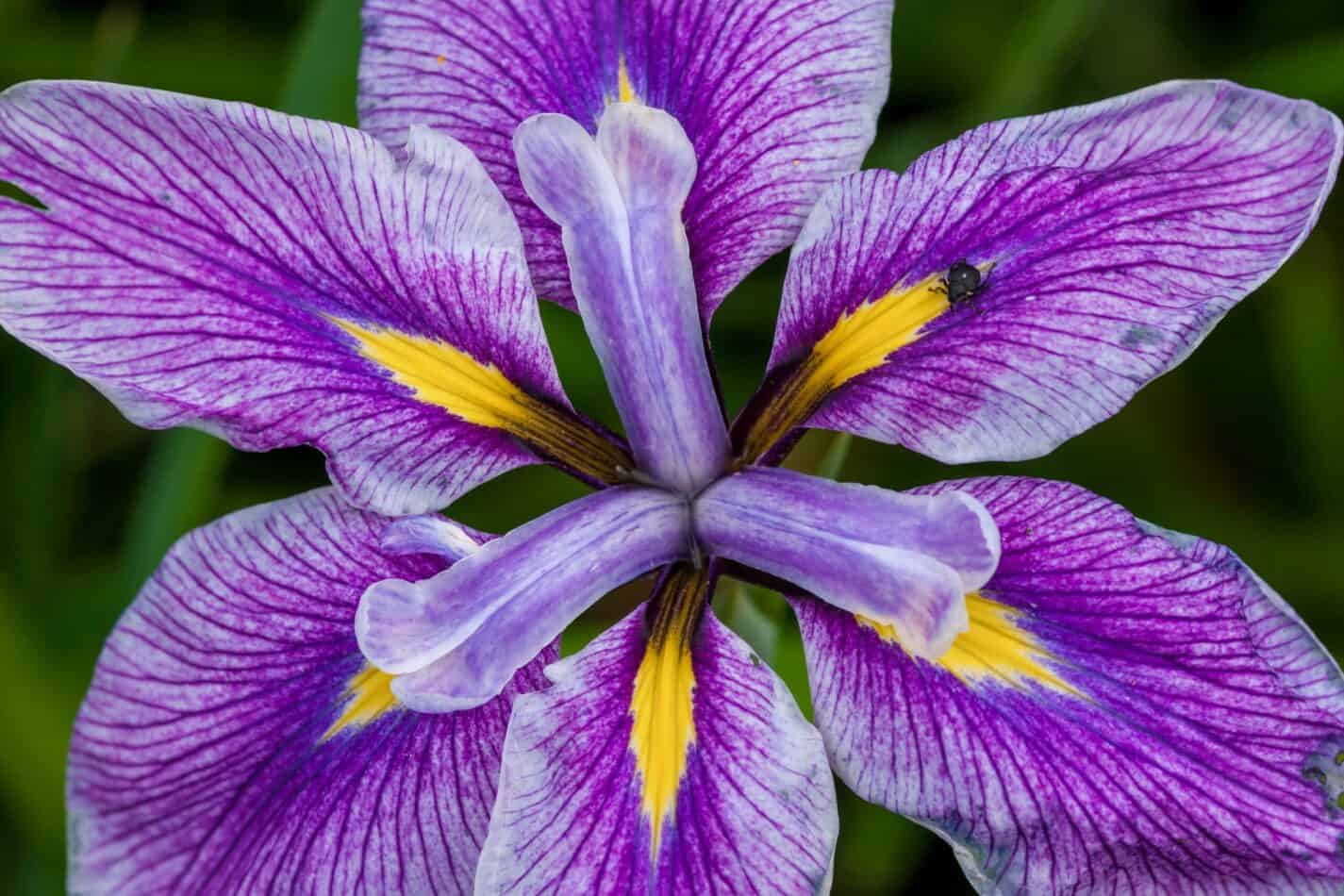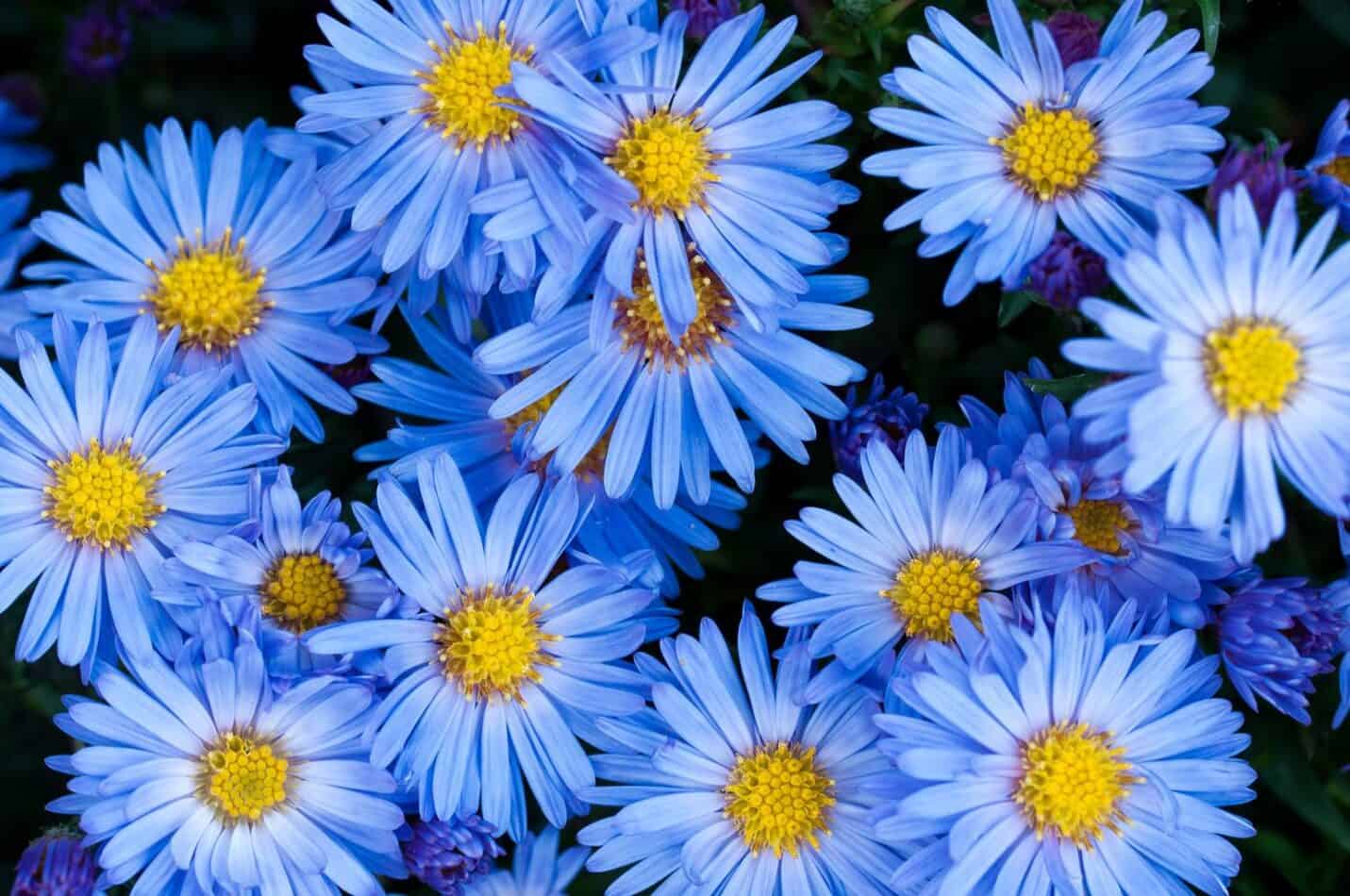The violet (Viola) is a cool-season plant with bloom markings that make the flower look like a smiling face. This happy little plant is easy to grow, can provide bloom color in early spring and fall, and can give meaning to your garden. Violets may remain in bloom throughout the winter in climates with mild winters.
Growing violets is easy; the plants are maintenance-free and practically grow themselves. Use these tips for successfully planting and growing violets in your garden or container.
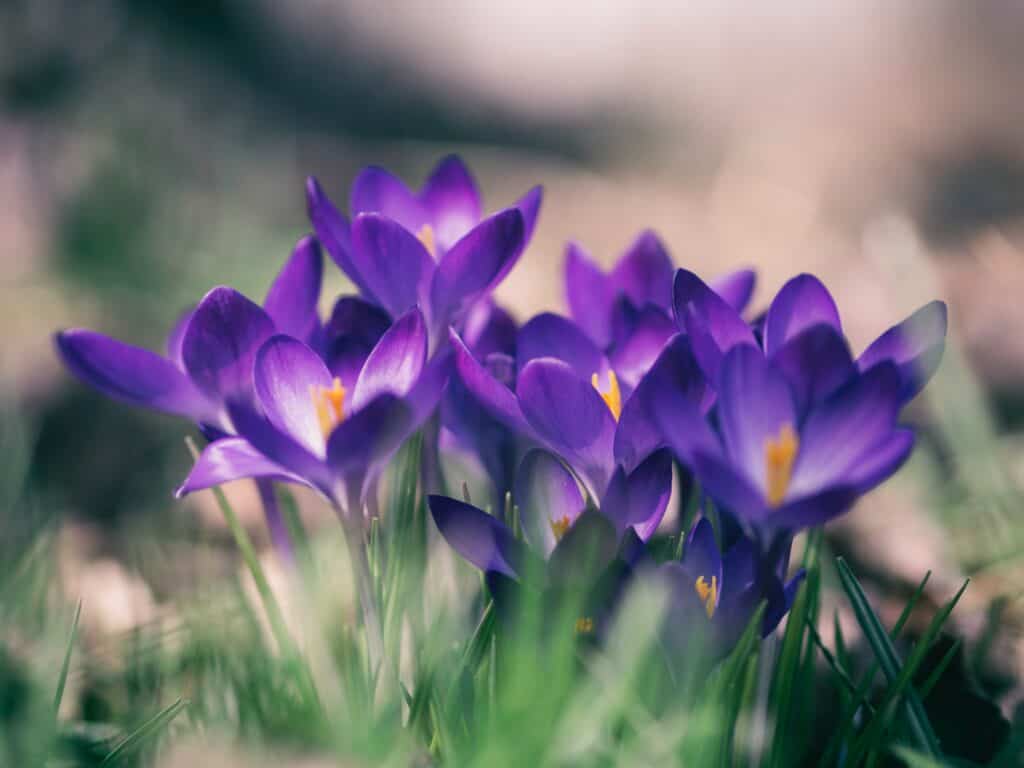
Planting Location
Select a planting location in full sun during the early spring months. Violets, closely related to pansies, grow and bloom while the weather is still cool, but the plants need plenty of sunlight to produce their best bloom color.
The violet plant will die back when the temperature becomes too warm in late spring and direct sunlight too intense. Underground runners may survive to produce new plants in the fall if the planting location is favorable.
A planting location in dappled sunlight, like near the base of a deciduous tree, will extend their life cycle.
Soil Requirements
Violets are native woodland plants and grow best in moist soil rich in organic matter. Mix plenty of organic compost before planting to create loose, well-draining soil.
Add a 1-inch layer of shredded leaves or compost as mulch after the plants are 2-3 inches high to keep the soil cool and moist.
How To Plant Violets
Violet seeds will yield the best results when planted in the fall. The seeds require cold stratification, so fall planting will allow the cold winter temperatures to prepare the seeds for spring bloom time.
Seeds can be started indoors 6-8 weeks before the last predicted frost date spring and transplanted outside after all danger of frost has passed.
Violet plants can be planted in early spring or late summer for spring and fall bloom color.
Another method of planting violet requires you to have one grown plant, allowing you to grow violets from leaves. Violets’ leaf cuttings are a simple way to grow violets as long as you take a mature leaf from the center of the plant’s lower leaves.
Choose a healthy leaf and place the leaf in water until it roots. Then place the rooted cutting into a pot filled with soil or peat moss. Keep the soil moist at all times. The violet leaf cutting should be placed in a sunny window or under a bright light bulb.
Use a clear plastic bag as an artificial shade house. The violet leaf cutting should be kept in a shaded area until it produces roots. After the roots form, remove the cutting from its container and transplant it into a larger pot.
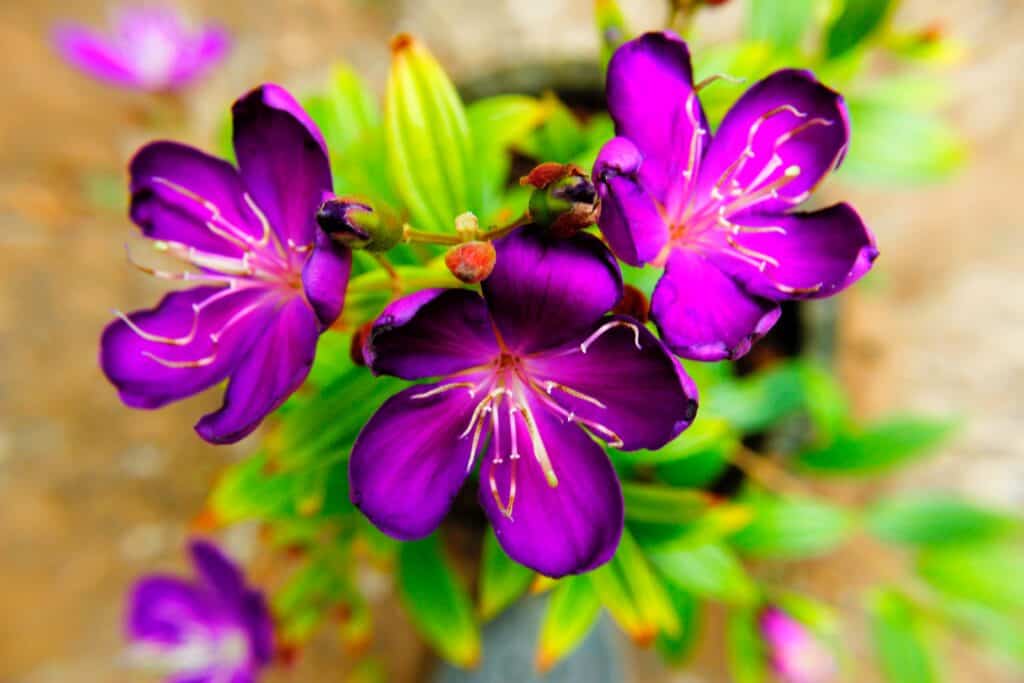
Propagation
Create new violet plants by cutting a stem off the plant near the root, then place the cut stem in a small container of moist potting soil. Place the container in a sunny location protected from the elements and keep the soil moist.
In 6-8weeks, the new violet plant will be ready to transplant into a larger container or planted outdoors.
Plants can be divided in early spring to fill in a garden area. Use a sharp hand-held trowel, slice through the soil, and plant roots to around a 4-inch depth. Keep the soil around the roots intact, gently lift divided portions out of the soil, and transplant them into a new garden.
Growing Habits
The blooms of these cheerful flowers are usually purple but can be blue, red, white, pink, orange, or yellow. Violets are self-seeding and produce hybrids that look nothing like the original plant when allowed to self-seed. The underground runners will have the same plants but not the seeds.
The plant will reach a mature height and width of 6-12 inches and make an ideal border plant or container plant.
Violets are fragrant flowers and can be used for culinary and decorative purposes. The plant grows equally well indoors or outdoors, in-ground or in containers, spring or fall. The amount of sun required to grow sweet violets varies; some will require partial shade, others indirect light to full sun.

Viola Variety
There are many different types of violets available. Some of the more common varieties include:
- Viola Odorata
is one of the most popular varieties of violets. It produces large, showy, single blossoms on stems up to 12 inches tall. Viola Odoratas are easy to grow, requiring little care other than regular watering. They do best in full sun and average soil conditions.
- Viola Odorata ‘Honeydew’
This variety has deep lavender-pink petals and is perfect for borders or rock gardens.
- Viola Odorata ‘White Swan’
This variety has pure white petals and makes a great accent plant.
- Viola Odorata ‘Wedding Bells’
A favorite among wedding planners because of its long-lasting fragrance, this variety has dark purple petals and brings a touch of color to any garden.
- Viola Odoria ‘Blue Beauty’
This variety has double flowers on strong stems and a beautiful shade of blue.
- Viola Odorum ‘Silver Lace’
This variety has silver lace petals and makes a stunning display in hanging baskets.
- Viola Odontonema ‘Crown Jewel’
This variety has bright green leaves and contrasts sharply against darker foliage.
- Viola Odotona ‘Little Princess’
This variety has light pink petals and makes a charming accent plant.
A special variety
African violet (Saintpaulia) is a member of the family Violaceae. The genus Saintpaulia comes from the city of St. Paul, Minnesota, where the first species was discovered. African violet species are easy to grow and thrive in poor soils with plenty of water. African violets are easy to grow and require only moderate sunlight and moisture. They prefer rich, loamy soil and should be planted in full sun. Water regularly during dry periods. African Violet fertilizer is recommended for this type of violet as it will help your plants grow stronger and healthier. If you use an African Violet Potting mix, add 1/2 cup fertilizer per pot. The African violet plant’s flower bed should be kept weed free as much as possible.
African Violets – Plant Care
African violets need a lot of sunshine, so they don’t tolerate shade. They won’t even bloom if there’s too much shade. Plant in full sun or at least partial shade. Keep the soil moist, especially during hot weather. During the winter months, keep the soil slightly drier than usual.
The African Violet Mix fertilizer should be used once or twice yearly because it contains the plant’s three macronutrients (nitrogen, phosphorus, and potassium). Apply about half of the total fertilizer when the first new growth appears after planting. The remaining fertilizer should be applied in late summer or early autumn before flowering begins.
African violet soil mixes are used when growing African violets from seed. These mixes contain all the nutrients needed by the young plant. You can buy these mixes at nurseries or order them online. To make your own African violet soil mixture, follow these steps:
- Prepare the soil. Remove weeds and debris from the area where you plan to grow your African violets. Dig out the top 6 inches of soil and remove rocks and other large objects. Add three parts composted manure to 2 parts peat moss. Work the soil thoroughly until it is well mixed. Then, work the soil again to incorporate air pockets into the soil.
- Sow the seeds. Use a small trowel to sow the seeds evenly over the prepared soil. Cover each seed lightly with fine sand or vermiculite. Place the pots in a warm location such as a sunny windowsill or under lights. When the seedlings emerge, thin the seedlings to one plant per pot.
- Grow the seedlings. Once the seedlings have two sets of true leaves, move them outdoors. Space the plants 18-24 inches apart. Water the plants daily until they begin to show signs of blooming.
- Feed the plants. As soon as the flowers appear, apply the African Violet fertilizer according to the label directions. Continue feeding the plants every few weeks throughout the season.
- Harvest the flowers. Cut off the stems just above the foliage. Allow the plants to dry on the plant for several days before removing the leaves. Store the dried leaves in a paper bag or envelope.
- Propagate the plants. Divide the plants in spring or fall. Dig up the entire plant and replant it in fresh soil.
- Maintain the plants. Keep the soil moist but not soggy. Avoid overwatering. Do not fertilize during the dormant period. After the last frost date, remove spent blossoms and dead leaves.
Wild Violets
Wild violets are found in many areas around the world. Some wild violets are poisonous, so always wear gloves when handling them. Wild violets are often called “wild pansies” or “wild violas.” There are hundreds of different types of wild violets. Most wild violets are perennials that live for years. Many wild violets are hardy and will survive temperatures down to -40 degrees Fahrenheit.
The best way to propagate wild violets is by division. Take cuttings from healthy plants in early spring. Or divide established clumps of wild violets in spring or fall.
To prepare a cutting, take a piece of rootstock from an older plant. Make sure the roots are firm and free of disease. Gently remove the lower portion of the stem using sharp pruning shears. Trim away any damaged tissue. If necessary, trim back the roots to encourage branching. Prune the tops of the shoots to promote bushy growth.
To divide wild violets, use a spade or shovel to loosen the earth around the base of the plant. Break up the compacted soil and gently lift the plant from its bed. Separate the roots and place them in separate containers filled with dampened peat moss. Plant the new plants immediately after planting the roots.
- Growing Wild Violets Indoors
You can grow wild violets indoors by starting them in seed trays. Sow the seeds in a warm house area with good air circulation. Seeds germinate best between 70°F and 85°F. If temperatures drop below 60°F, cover the tray with clear plastic wrap. Once the seeds sprout, remove the plastic wrap and mist the plants daily with water.
When the plants have four true leaves, set them in individual 4inch pots filled with potting mix. Mist the plants daily.
When the plants are 6 inches tall, please place them in a cool room (50°F) for several days. Afterward, move the plants back to a warmer location (70°F). Continue this process until the plants are large enough to transplant outdoors.
Horned Violets
Horned Violets are also known as “Indian Violets,” “Painted Violets,” “Crown Violets,” “Rose Violets,” and “Tiger Lilies.” Horned violets are native to India and Asia. They are popular garden plants because their bright colors attract butterflies and hummingbirds. The flowers of horned violets open at night and close during the day.
Horned violets need rich, well-drained soil and full sun like other violets. To grow horned violets, start your seeds indoors about six weeks before you plan to transplant them outside. Seedlings should be transplanted into individual 3-inch pots when they reach three inches tall. Grow the plants in a greenhouse or cold frame until the weather warms up. Then move the plants outdoors once all danger of frost has passed.
- Transplant horned violets directly into the ground when the weather warms up in late summer or early autumn. Space the plants 18 inches apart. Water the plants regularly. Apply a general-purpose fertilizer according to label instructions.
- Divide horned violets in spring. Remove one plant from each pot. Set the plants 1 foot apart in rows 2 feet wide. When the plants begin to flower, pinch out the tips of the stems to encourage bushier growth.
- Divide horned violets again in mid-summer if needed. Remove two plants from each pot. Place the plants 12 inches apart in rows 30 inches long. Pinch out the tips of the growing points to encourage more branching.
After Care
Regular watering is essential to keep plants happy. The soil should be kept moist but not soggy at all times. Feed violets once a month during their bloom season with water-soluble plant food. Remove faded blooms to keep plants looking well-groomed and encourage new blooms.
Hot to Grow Violets in Containers
Violets can be grown in containers too! You can buy ready-made containers or make your own. Use plastic tubs, buckets, or even old tires. Fill the container with moist potting mix. Add some compost or manure to improve drainage.
Place the container in direct sunlight. Water it with cold water until it’s moist but not wet. Fertilize every month or so. As the plants mature, repot them into larger containers. I am always partial to a pretty container garden. The advantage of a container garden is that you can bring it inside the house during the colder months. You might want to buy a spray bottle to keep the leaves wet when it’s time to water the plants. Ensure your containers have drainage holes positioned in indirect sunlight or light shade.
If you want to grow violets in a hanging basket, fill the bottom half of the basket with gravel or small stones. Cover the pebbles with a layer of sand. Add a few handfuls of potting mix. Add a few violets to the top of the mixture. Be sure to keep the soil moist. If you are growing your violets indoors, don’t forget to buy some grow lights. For example, African violets need 14 hours of light each day and a moderate temperature to thrive.
Planting Tips
When planting violets, use a spade or shovel to dig a hole twice as wide as the root ball. Place the root ball in the center of the hole and cover it with about 1 inch of soil. Firmly tamp down the soil around the roots.
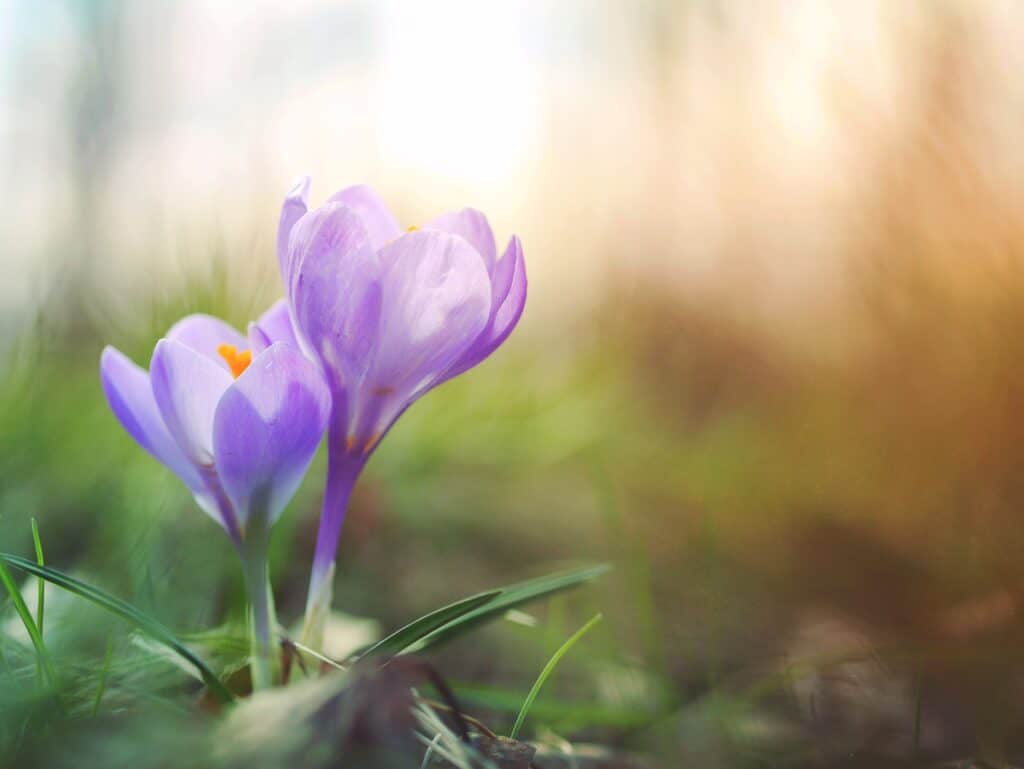 Planting Idea
Planting Idea
Planting violets in a strawberry tower will create the appearance of one tall flowering plant covered with blooms. A strawberry tower makes plant care extra easy – add bi-weekly and water-soluble plant food once a month to the top of the tower and dead-head plants as needed.
A strawberry tower is also portable; violets can be moved as necessary to decrease or increase sun exposure. If you want to find out about other purple flowers, don’t miss to check out our dedicated purple flowers list.
What we love from Amazon this week
Buy these wonderful flowers directly from Amazon:


